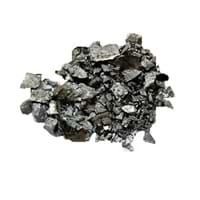Facts About Iron and Tin
Facts
Interesting Facts
- Iron is not always magnetic in nature, its allotrope are ferromagnetic and the B allotrope is nonmagnetic.
- The blood consists Iron in hemoglobin molecules to transfer Oxygen in the body.
- In the list of most abundant element Tin is ranked 49th.
- Tin metal does not react with water as well as does not corrode in it.
Sources
Earth's crust, Found in Minerals
Found in Minerals, Mining
History
Discovery
Before 5000 BC
Before 3500 BC
Abundance
Abundance In Universe
1.1 * 10-1 %
1
4 * 10-7 %
20
Abundance In Sun
~0.1 %
1
~0.0000009 %
19
Abundance In Meteorites
22.00 %
1
0.00 %
24
Abundance In Earth's Crust
6.30 %
2
0.00 %
34
Abundance In Oceans
0.00 %
12
0.00 %
26
Abundance In Humans
0.01 %
5
0.00 %
13
|
||
|
||
|
|
||
|
||
|












